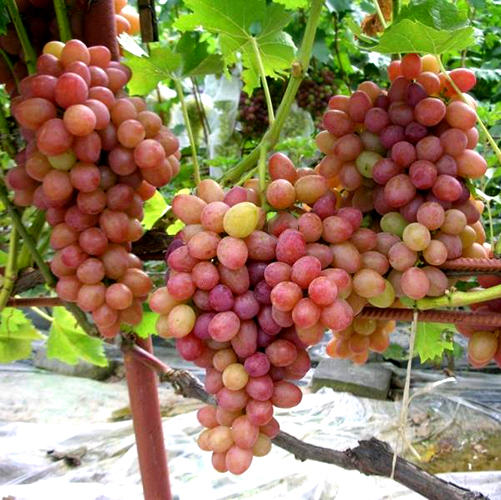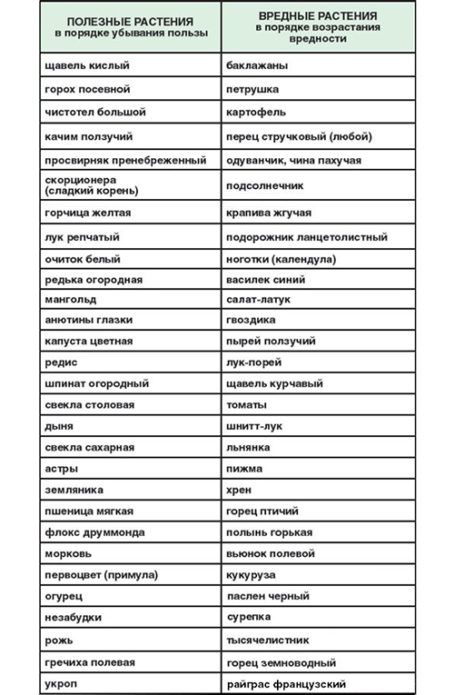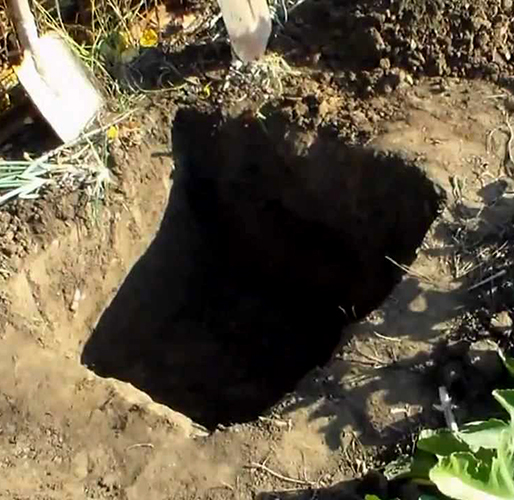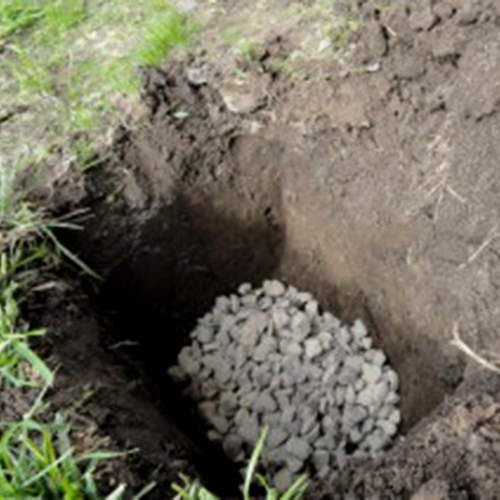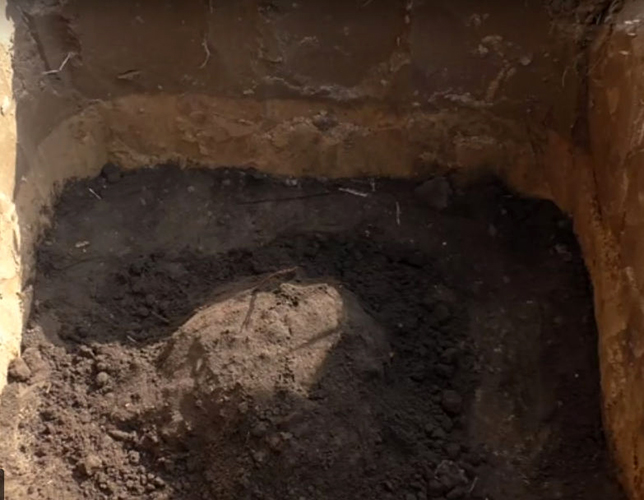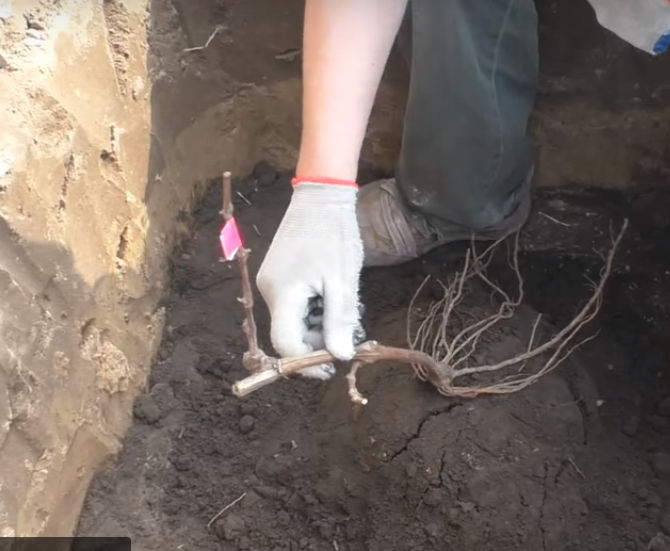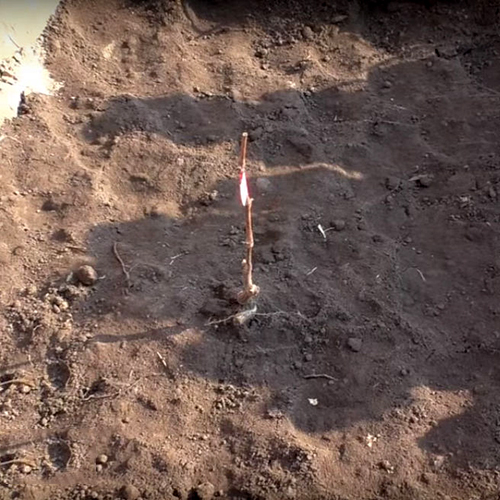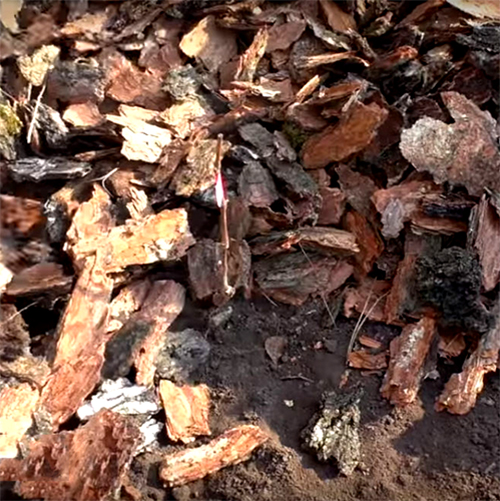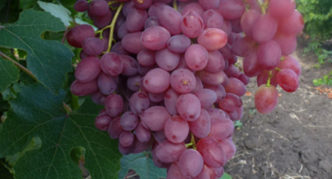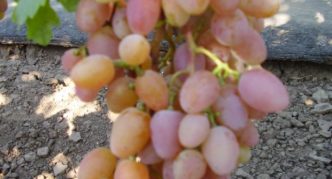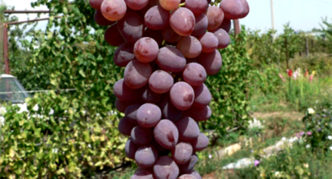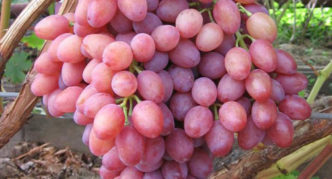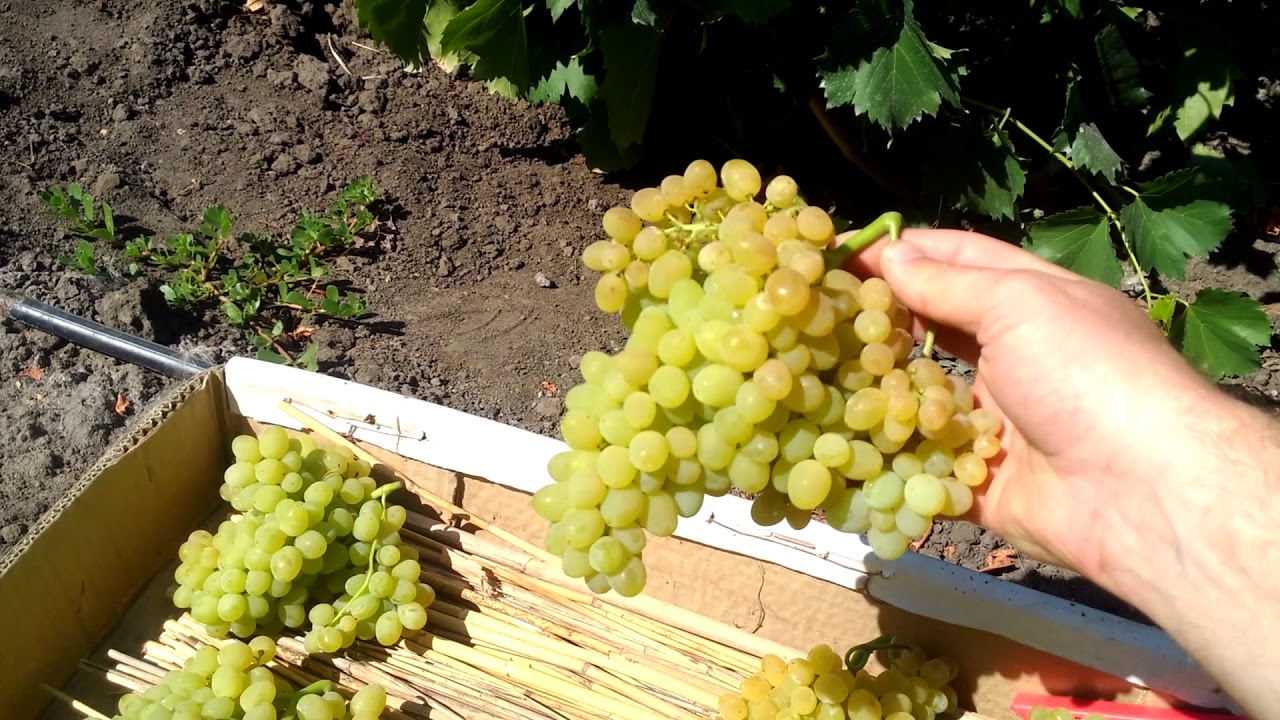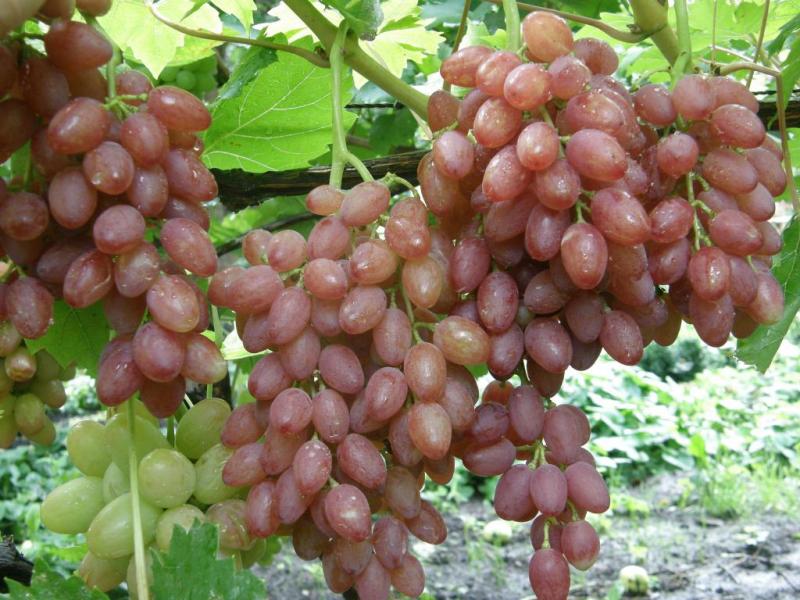All grape varieties in which the berries are absent or have soft rudimentary seeds are called raisins. The beginning of the selection of grapes with such characteristics was laid by varieties grown in the Middle East and Central Asia. Currently, there are varieties and hybrid forms of raisins that can grow in Central Russia, in Belarus and in Ukraine. One of the representatives of the raisins group is the Veles grape.
Content
About the creator of grapes Veles
The author of the hybrid form of grapes Veles Vitaly Vladimirovich Zagorulko took the first steps in viticulture back in 1980. At first it was only a few bushes of Asian and European selection. A few years later, he became interested in grape varieties bred by breeders of research institutes of plant growing in Russia, Ukraine and Moldova.
The first successes of V.V. Zagorulko grape selection at the beginning of the twenty-first century became the hybrid forms of Nectaria and Plek. The most successful of more than 30 hybrids, Vitaly Vladimirovich considers Libya grapes. V. Zagorulko together with the Yalta Institute of Viticulture "Magarach" offered Libya for state tests. In 2014, this variety was included in the register of the State Commission of the Russian Federation for the Testing and Protection of Breeding Achievements.
An amateur breeder created 8 seedless grape hybrids, but Veles is considered the most successful growers. In 2010, this grape received two gold medals at the Golden Bunch competition in the nominations of folk and professional tasting.
Veles - pink raisins
Kishmish Veles is obtained by crossing two grape varieties - Sofia and Rusbol.
Video about Veles
Sofia is the winner of the competition "The Best Grape Bunch of Ukraine 2009". Grapes of V. Zagorulko's selection of early ripening period, from the appearance of leaves to harvesting 110-115 days pass.
- Very large pink bunches of this variety weigh 1–1.7 kg.
- Berries up to 3.5 cm long, have a well-pronounced nutmeg flavor and contain one or two seeds.
- Its frost resistance is up to 21 ° C.
- Resistance to fungal diseases 3.5-4 points.
Rusbol is a breeding kishmish of the Yakov Ivanovich Potapenko All-Russian Research Institute of Viticulture and Winemaking.
- The fruits ripen in 115–125 days.
- Berries up to 1.6 cm in diameter amber are collected in loose clusters weighing 500-600 g.
- Its frost resistance is 25 ° C.
- Resistance to fungal diseases 3.2 points.
The ripening period for Veles grapes is 100–105 days. Raisins are made from the fruits of this grape, eaten fresh and harvested for juice or wine. This plant inherited from its parents:
- vigorous bush;
- large clusters of pink color (from 600 to 2000 g);
- nutmeg taste;
- berries weighing up to 5 g;
- thin skin, which is practically imperceptible when used;
- a bunch of conical shape, sometimes with a wing, of medium density or loose;
- frost resistance up to 21 ° С;
- load on a bush of 35–40 fruiting vines;
- resistance to fungal diseases 3.5 points on the 5 point Gusfeld scale.
When testing a grape variety, experts assess its resistance to damage from diseases and pests. In the twentieth century, the German breeder V. Husfeld developed a system for assessing the sustainability of grapes in points, which was named after him:
- 0 points - there are no diseases and pests;
- 1 point - weakly affected by diseases and pests (less than 5% of the total mass of the bush);
- 2 points - highly resistant (less than 10% of the total mass of the bush are affected by diseases and pests);
- 3 points - relatively stable (less than 25% of the crop is affected, the surface of the leaf apparatus, shoots, etc.);
- 4 points - susceptible varieties (from 25 to 50% of the plant);
- 5 points - the bushes are very strongly affected by the disease (from 50 to 100%).
How to grow raisins Veles
The choice of a place for planting Veles is the same as for any other grape. He needs a sunny, well-warmed place. Groundwater, even with prolonged rains, should be no closer than one and a half meters from the surface of the site. If the terrain is hilly, then the southern slope is chosen, where the yield will be higher and the vine will ripen better by autumn.
Video on how to plant grapes
- spinach, cauliflower and cucumbers almost double the growth of grape bushes;
- small plants can inhibit the growth of grapes and reduce resistance to frost and disease.
L. Moser for 6 years experienced the influence of 170 wild and cultivated plants on grapes. The table lists the plants whose influence is most pronounced
Table of friends and foes of grapes
Having chosen a place and friends for Veles, they begin to plant it. It is carried out in the same way as grape seedlings of other varieties:
- digging a hole 60–70 cm in diameter and 80 to 100 cm deep;
- drainage is laid if the soil is clayey;
- fertile soil mixed with 100 g of nitrophosphate or 60 g of superphosphate and 30 g of potassium salt is poured into the pit, form a mound;
- position the seedling so that the roots do not bend up;
- cover the roots with soil by 10-15 cm;
- water with 2–3 buckets of not cold water;
- add dry earth to the edge of the pit;
- mulch the soil around the seedling with tree bark, sawdust, straw or peat.
Above the ground during autumn or spring planting, a stem with 2–4 buds should remain.
For the winter, Veles must be covered not only in the first winter after planting, but also throughout the life of this plant. At temperatures below -21 ° C, an adult bush dies.
This plant is looked after in the same way as any other grape:
- form a bush with a load of 35–40 buds for fruiting;
- fed with organic and chemical fertilizers;
- sprayed against diseases and pests;
- carry out the whole range of green operations;
- harvest on time.
Already in the second year after planting, if you planted a one-year-old seedling, you can try the first fruits of the Veles grape. In the southern regions, the second harvest is obtained by stepchildren, 2-3 weeks later than the main one. In regions with colder climates, all stepsons will be removed so that the berries have time to ripen.
What Veles wins
It is possible to compare grape varieties of the raisins group only by comparing their characteristics.
Compared to other varieties of raisins, Veles wins in:
- ripening time;
- the size of the bunches;
- the size of the berries.
A very early ripening period makes it possible to get a harvest of large and tasty berries both in the southern regions and in Central Russia.
Table of characteristics of grape varieties
| Variety name | Ripening period (days) | Winter hardiness | The weight bunches (g) | The weight berries (g) | Yield per bush (kg) | Features: |
| Veles | 100–105 | -21° | 600–2000 | 5–7 | 30 | nutmeg taste; does not crumble 45 days; resistance to diseases 3.5 points. |
| Aksaysky | 105–110 | -24° | 500–600 | 4- 5 | 35 | nutmeg flavor; does not crumble until frost; disease resistance 2.7 points; |
| Radiant | 125–130 | -15–18° | 200–600 | 2,5 — 4,0 | 30 | nutmeg flavor; does not crumble until frost; resistance to diseases 2.0 points. |
| Red | 116–125 | -23° | 400–600 | 4- 5 | 28 | nutmeg taste; does not crumble for 15-20 days resistance to diseases 3–3.5 points; |
Kishmish varieties shown in the table
- Bunch of raisins Veles
- Bunch of raisins Red
- A bunch of raisins Aksaysky
- Bunch of raisins Radiant
From the above characteristics, they clearly show that Veles has:
Winegrowers' opinion about Veles
Veles wintered well with me and in the spring one of the first to start growing. On August 10, I removed the growth points, by this time two shoots had reached 3.5 m each. Resistance with two treatments this year is good, I did not notice any sores. The ripening of the vine for the first year is on average 1 m.
The size of the bunches and the load on the bush looked impressive, and the pronounced nutmeg and dense pulp did not leave me indifferent to Veles.
We ate a bunch of Veles, he is already quite ready 08/10/2011. Rudiments are found in about 20% of berries, but they are not as tough as in Zaporozhye and not as large as in Radiant. But this is the first real fruiting (I don't count last year's signaling of 5 berries). The impressions of the berries are as follows: compared to Radiant, the berries are slightly more watery, the nutmeg is very tender. Let's see what happens next, when the bunches hang on the bush, where the taste and sugar will move.
The Veles grape does not require special attention, it resists disease well and can be grown on a personal plot by novice winegrowers in regions with different climatic conditions.
